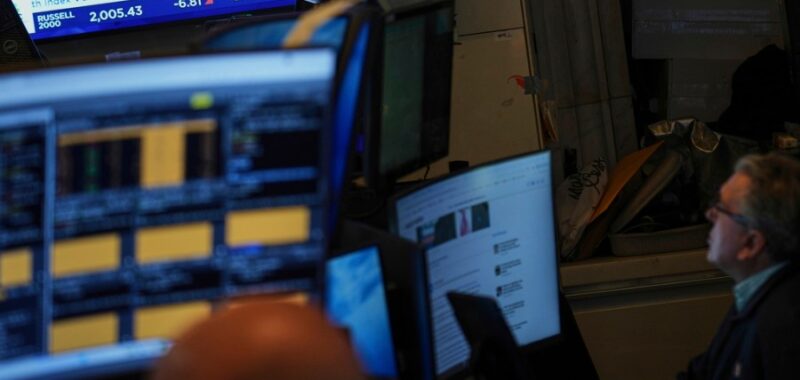
The indefatigable American consumer has managed to regularly surprise economic doomsayers in recent years. Real personal consumption expenditure has remained strong and steady during much of the post-pandemic expansionary cycle. Early in the recovery, consumption was buoyed by excess savings associated with large-scale fiscal transfers and by strong wage gains linked to an unusually tight labor market.
More recently, however, low- and middle-income households have struggled in the face of sticky inflation and high borrowing costs. They have depleted their excess savings and a cooling labor market is starting to affect wage growth. Delinquency rates (especially for credit card and auto loans) among subprime borrowers are on the rise.
Consequently, personal consumption expenditure, which accounts for around 67 percent of GDP, is increasingly driven by the spending patterns of high-income households. Those earning more than $250,000 a year (the top 10 percent of earners) are now responsible for nearly 50 percent (compared to the one-third share observed in the 1990s) of all U.S. consumer spending. So, what has led to the amplified reliance on spending by the rich of late, and what risk does this pose for the American economy?
Before addressing recent developments, it is worth noting that, in economics, income and wealth are related but distinct concepts. Income, which represents the salary or earnings per period, is a flow variable (something measured over a specified period of time). Wealth, which refers to net worth (total assets minus total liabilities), is a stock variable (something measured at a specific point in time).
Higher-income households usually have lower marginal propensity to consume — that is, the the proportion of additional income the household is likely to spend rather than save — relative to lower income households. Put simply, low-income and poor households, who are often living paycheck to paycheck, are likely to spend a larger portion of any additional income they receive, whereas high-income and rich households already have most of their needs met and are thus likely to save a larger fraction of their next dollar in income.
Furthermore, high-income households deploy their extra savings effectively via financial markets to grow their wealth. Overall wealth in America remains highly concentrated, with the richest half holding 97.5 percent of national wealth and the bottom half holding a meager 2.5 percent at the end of 2024. Perhaps even more tellingly, the top 0.1 percent held 13.8 percent of national wealth.
For low- and middle-income households, their wealth, if any, is tied to their real estate holdings (often, their primary residence). In recent years, the emergence of Exchange-traded funds and zero-commission trading platforms, alongside the rise of popular trading apps like Robinhood and social media groups like Reddit, have led to a sharp uptick in retail investing and boosted the exposure of Americans to the stock market.
Yet, financial asset holdings remain highly concentrated and contribute to the extreme wealth divide. According to data from the Federal Reserve, the richest 10 percent held around 87 percent of corporate equities and mutual fund shares at the end of 2024.
As elevated price levels and “higher for longer” interest rates began to throttle spending by poorer households in recent quarters, the economy became increasingly reliant on wealthy households, who had benefitted from both high stock prices and high money market rates. This dependency, however, has sharply boosted the downside risks to the American economy from any future market corrections. The impact of a negative wealth effect associated with a drop U.S. equity values may be far more sizable than that observed in previous cycles.
Although some studies from the late 1990s and early 2000s downplayed the macroeconomic significance of wealth effects associated with shifts in asset values, recent analysis suggests that the magnitude of the wealth effect may have risen sharply in the post-pandemic era.
When combined with the increased reliance on rich households for sustaining aggregate consumption expenditure, even a relatively modest rise in the wealth effect implies a greater hit to the economy in the event of an equity bear market. Local economies that are especially reliant on wealthy spenders may be particularly vulnerable. The stock market is no longer just a harbinger as it may now trigger business-cycle shifts.
Since the late 1990s, markets have come to rely on the “Fed Put,” the perceived willingness of the Federal Reserve to step in and offer some sort of monetary accommodation when faced with sharp market selloffs. Sticky inflation, however, may prevent the Fed from riding to rescue this time around.
During his first term, President Trump paid a great deal of attention to the stock markets. Intriguingly, in the early days of the Trump 2.0 era, he appears willing to tolerate stock market corrections, highlighting that a ‘Trump Put’ may no longer exist.
If Trump ignores recent market tumult and remains focused on pursuing a tariff-centric agenda to radically rewire the global trading system, then an equity bear market may be unavoidable. Wall Street’s rosy projections for U.S. equity indices from earlier this year will require a major reassessment.
Heightened policy uncertainty, the rapidly souring mood of the American consumer, and the apparent demise of the “U.S. exceptionalism” trend may generate a dangerous self-fulfilling cycle. Market selloffs affect consumer confidence and generate negative wealth effects, and these in turn cool the economy, which then causes corporate earnings to decline, leading to further stock market losses. If rich households respond by curtailing their spending, a recession may follow.
Vivekanand Jayakumar, Ph.D., is an associate professor of economics at the University of Tampa.

